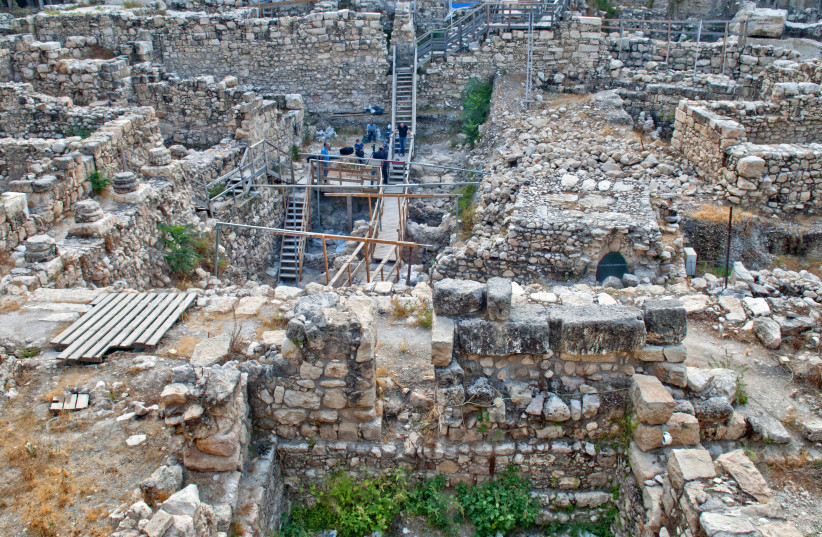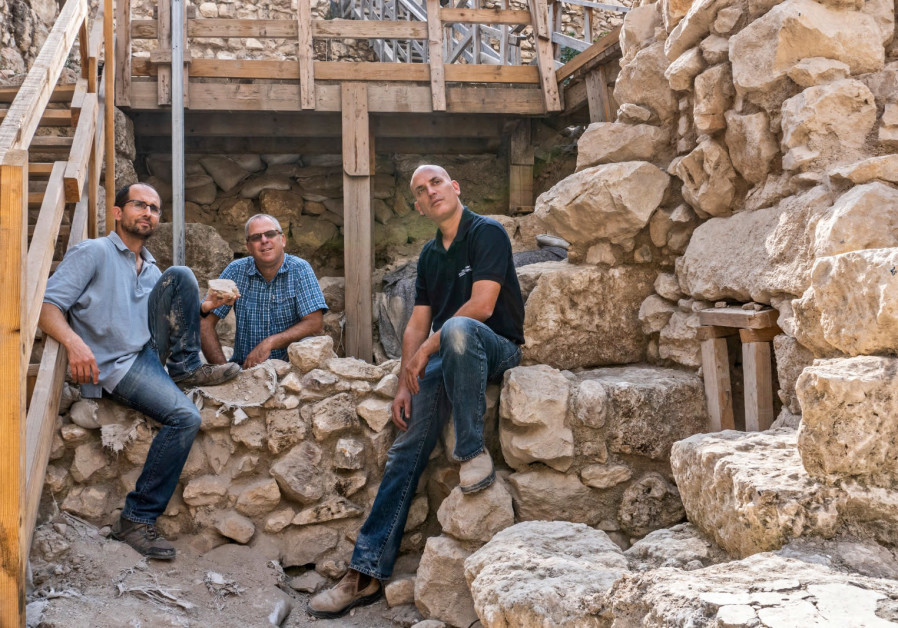In August 586 BCE, after months of siege, the Babylonian troops breached the walls of Jerusalem and proceeded to destroy and burn the city, including the Holy Temple.
ROSSELLA TERCATIN

A team of Israeli researchers from the Tel Aviv University, the Hebrew University of Jerusalem and the Israel Antiquities Authority have been able to measure the Earth’s magnetic field on the day Jerusalem was destroyed by the Babylonians in 586 BCE, shaping a groundbreaking contribution by the Jewish people’s long memory to preserve and reveal traces of the planet’s past.
The trailblazing study published on the journal PLOS ONE on Sunday opens new horizons in the understanding of the devastation of Jerusalem, but it also offers important insights in a scientific discipline that has vast implications in many contemporary aspects of life, from navigation systems to environmental considerations, as TAU’s Yoav Vaknin, the lead author of the paper, explained to The Jerusalem Post.

In August 586 BCE, after months of siege, the Babylonian troops breached the walls of Jerusalem and proceeded to destroy and burn the city, including the Holy Temple. The moment marked one of the most dramatic events in Jewish history and is commemorated to this day with the fast of the 9th of Av, which centuries later also became the day when the Second Temple was annihilated by the Romans in 70 CE.
Just a few steps from the Temple Mount, one prominent two-story building, probably used for administrative purposes, was also set on fire and collapsed. Over 2,600 years later, its carbonized beams and stones uncovered in the Givati parking lot excavation at the City of David National Park represent an incredibly vivid testimony of those grievous days, whose appalling events are described in the Bible.
“By the ninth day [of the fourth month] the famine had become acute in the city; there was no food left for the common people. Then [the wall of] the city was breached. All the soldiers [left the city] by night through the gate between the double walls, (…) On the seventh day of the fifth month—that was the nineteenth year of King Nebuchadnezzar of Babylon—Nebuzaradan, the chief of the guards, an officer of the king of Babylon, came to Jerusalem. He burned the House of the LORD, the king’s palace, and all the houses of Jerusalem; he burned down the house of every notable person,” reads the last chapter of the book of II Kings.
Among the most notable remains of the building, the archaeologists noticed several fragments of a sophisticated plaster floor. Those pieces, left in the same position for millennia, proved to be essential for measuring the intensity and direction of the Earth’s magnetic field in those precise moments.
“Even though my PhD is in archaeology, this is an interdisciplinary research between archaeology and live sciences,” Vaknin told the Post.
Among his advisors was Dr. Ron Shaar, the director of the Paleomagnetic Lab at the Hebrew University.
“One of the goals of their lab is to understand how the magnetic field behaved in the past before direct measurement began some 400 years ago at the initiative of the captain of a British ship,” Vaknin said.
Over time the collection of data has become vaster and more precise. The mathematician Carl Friederich Gauss developed a system to measure the intensity of the phenomenon in the 19th century. Today, the most accurate information is provided by satellites, which are not influenced by any human interference that might occurred on the planet.
However, decades after Nobel Prize winner Albert Einstein described the fluctuations of the Earth’s magnetic field as one of the five mysteries of physics, many enigmas remain.
While currently and in modern history the direction has been associated to the geographic north, making it a pillar of navigation systems for centuries, in the past the magnetic field is known to have been completely neutral or even pointing south. Since it also represents an essential factor to screen the planet from dangerous solar radiations, the scientists worry about what could happen if such changes should occur again.
“Recently we have seen many instances in which live sciences are giving a contribution to archaeology, but in this case also the opposite is true,” Vaknin highlighted.
For his PhD, him and his advisors decided to focus on the issue of the Earth’s magnetic field in archaeological layers resulting from massive destructions.
When objects containing magnetic minerals burn at a very high temperature, those minerals are re-magnetized and therefore record the direction and the magnitude of the field in that precise moment. Artifacts like pottery, bricks and tiles, which are fired in furnaces, ovens and kilns, can all provide these records. However, as precise as their dating can be, it usually spans of at least a few decades. On the contrary, if documented by historical records, destruction lawyers can be pinned down to a very specific moment – in the case of Jerusalem in 586 almost to the date – providing a unique opportunity.
“The focus of my research was the Iron Age, which in Israel goes from around 1200 to 586 BCE. At the beginning I tried to focus on a different archaeological site where they had uncovered traces of the Babylonian destruction also located in the City of David but I was not able to carry on the measurements effectively. I was then suggested trying just across the street,” Vaknin recalled.
At that moment, the archaeologists were not sure that the remains that they had recently unveiled at the Givati parking lot dated back to the Babylonian destruction or were to be associated with the more recent Persian or Hellenistic periods, outside the scope of the PhD student’s research.
“Since I was so close, I decided to try anyway,” he explained.
The preliminary results of his measurements seemed very promising. Only a few months later, the archaeologists reached the floor of the building and the findings confirmed the dating and offered new insights.
“We dated the destruction of the structure to 586 BCE – the destruction of Jerusalem by the Babylonians, based on smashed pottery vessels typical of the end of the First Temple period, found on the floor. Apart from the broken utensils, we found signs of burning and large quantities of ashes,” the directors of the excavation, Dr. Yiftah Shalev of the IAA and Gadot of TAU explained in a press release.
Vaknin focused on measuring the magnetic field of the numerous fragments of floor scattered around, finding out that regardless of their position, they recorded the same magnetic direction.
“Measuring magnetic data from a floor burned thousands of years ago is no trivial matter,” commented Shaar. “We had to characterize the magnetic particles, understand how the magnetic data was coded in the material, and develop measuring techniques enabling us to read this data. Nature hasn’t made life easy for us. Thus a significant part of the analytical work we do at the paleomagnetic lab is investigating the magnetic properties of the archaeological materials. Fortunately, in this particular study, Yoav was able to decipher nature’s magnetic code and give us important information from several angles: historic, archeological and geomagnetic.”
Vaknin highlighted that in order to conduct a similar process, carrying out the measurements on objects that are still in their original position in the field after the destruction is essential. Artifacts from the same period which have been moved can provide information regarding the magnetic field’s magnitude but not its direction. In the future though, researchers will be able to use this system to date the remains they uncover.
The team is already working on carrying on similar research on destruction lawyers from different periods in other sites, such as the one caused by the Assyrian conquest in the 8th century BCE.
The ultimate goal is to create a new system of precise dating based on the Earth’s magnetic field and its changes by reconstructing them in a curve.
“We are building the curve from a lot of data and the idea is that the destruction lawyers which are very precisely dated are the chronological anchors for all this information,” Vaknin concluded.
Content retrieved from: https://www.jpost.com/israel-news/scholars-trace-earths-magnetic-field-in-586-bce-through-jerusalems-ruins-637950.
